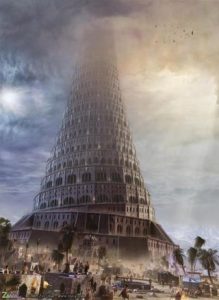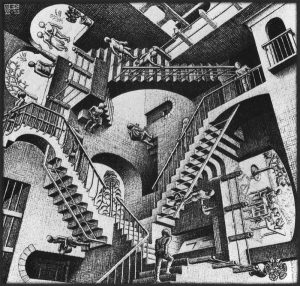
Steven Millhauser’s “The Tower” is a genre of the fantastic that elevates itself to the heavens within the first sentence. As the section within Dangerous Laughter suggests, the story is about the impossible architecture of a tower that reaches and penetrates the heavens. What is interesting, which is seen as well in “The Dome,” is that the narrators explain the complications and solutions of the architecture in an attempt to try to make the story in some sense believable. Furthermore, because the narrator tells us the detailed history of the Tower, we, alongside the narrator, navigate through time and space.
There is also this ridiculous concept of people wanting what they cannot have, the idea that the grass is greener on the other side. Thus, when people reach heaven, they are drawn back to the “plain,” and those who have yet to reach the top keep traveling up, creating this impossible labyrinth where they will never reach where they want to go.
Thus it came about, after the completion of the Tower, that there was movement in two directions, on the inner ramp that coiled about the heart of the structure: an upward movement of those who longed to reach the top, or to settle on a level that would permit their children or their children’s children to reach the top, and a downward movement of those who, after reaching the top, longed to descend toward the plain below, or who, after climbing partway, felt a sudden yearning for the familiar world.
 This the narrator deems a “vertical way of life,” and the direct contradiction for those that could not or would not move live the “horizontal life.”
This the narrator deems a “vertical way of life,” and the direct contradiction for those that could not or would not move live the “horizontal life.”
Yet by the end, as the project of the tower is left abandoned, all those in the tower die and eventually go to heaven. Which in a transcending experience is to say that the tower did reach heaven.